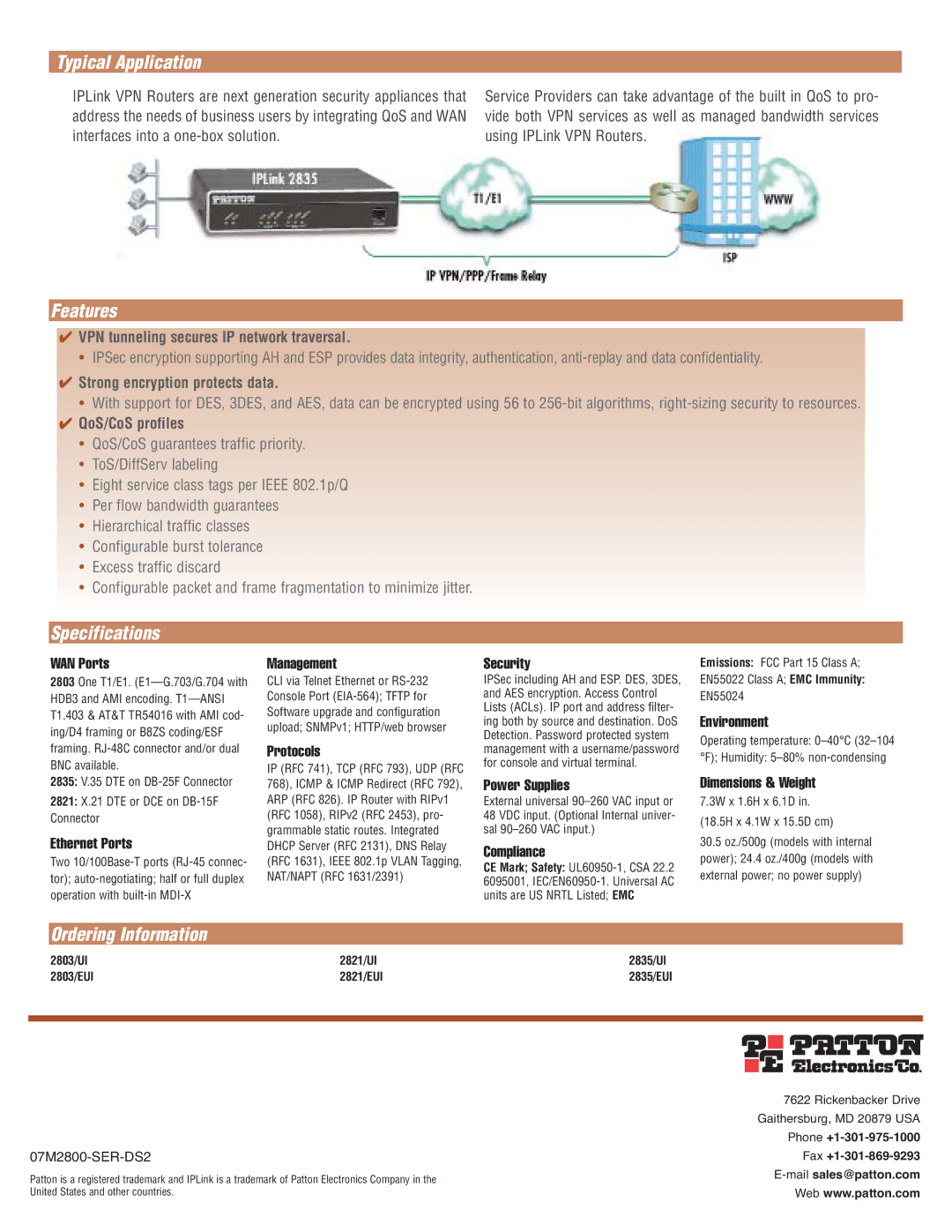2821, 2835, 2803 specifications
The Patton Electronics 2803, 2821, and 2835 series are pivotal products in the telecommunications space, catering to the increasing demand for reliable data connectivity. These versatile devices are designed for a variety of applications, ranging from enterprise-grade transport solutions to more specialized uses in various industries.The Patton 2803 model is recognized for its robust performance in converting and extending E1/T1 lines over Ethernet. With features like auto-sensing and a user-friendly interface, the 2803 simplifies connectivity for network administrators while ensuring optimal data throughput. Its built-in bridging and routing capabilities allow for seamless integration into existing infrastructures, making it an excellent choice for businesses modernizing their network setups.
Moving on to the 2821 model, this unit expands on the capabilities of the 2803 by offering enhanced flexibility. It supports a wide range of data formats, including those required for legacy systems. This means that organizations can maintain their historical systems while transitioning to newer technologies. Additionally, the 2821 features advanced diagnostics tools and an intuitive web-based management interface, enabling real-time monitoring and troubleshooting. This level of accessibility is crucial for maintaining network integrity and performance.
The Patton 2835 model stands out with its focus on high-capacity data transfers. It is designed to handle larger bandwidth needs and is particularly well-suited for businesses that require continuous data streaming or high-volume transactions. Equipped with advanced security features and support for advanced telecommunication protocols, the 2835 ensures that sensitive data remains protected during transmission. Its compact design allows for easy deployment in various environments, reducing the overall footprint often associated with telecommunication hardware.
Each of these models employs cutting-edge technologies, such as error correction and adaptive jitter buffering, which contribute to improved data resiliency and quality of service. Additionally, the series benefits from Patton's commitment to customer support, ensuring businesses can maximize their investment in these devices.
Overall, the Patton Electronics 2803, 2821, and 2835 series deliver exceptional performance with a focus on flexibility, security, and user-friendly management. They represent an important advancement in telecommunications, empowering organizations to enhance their data connectivity capabilities while ensuring reliability and efficiency. As enterprises continue to evolve, these devices will play a crucial role in supporting next-generation communication needs.

